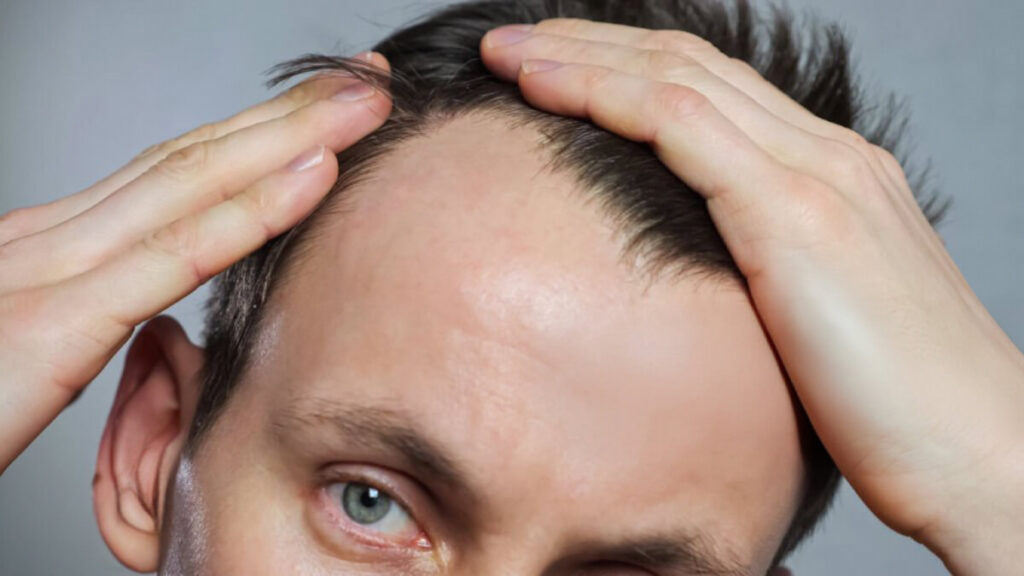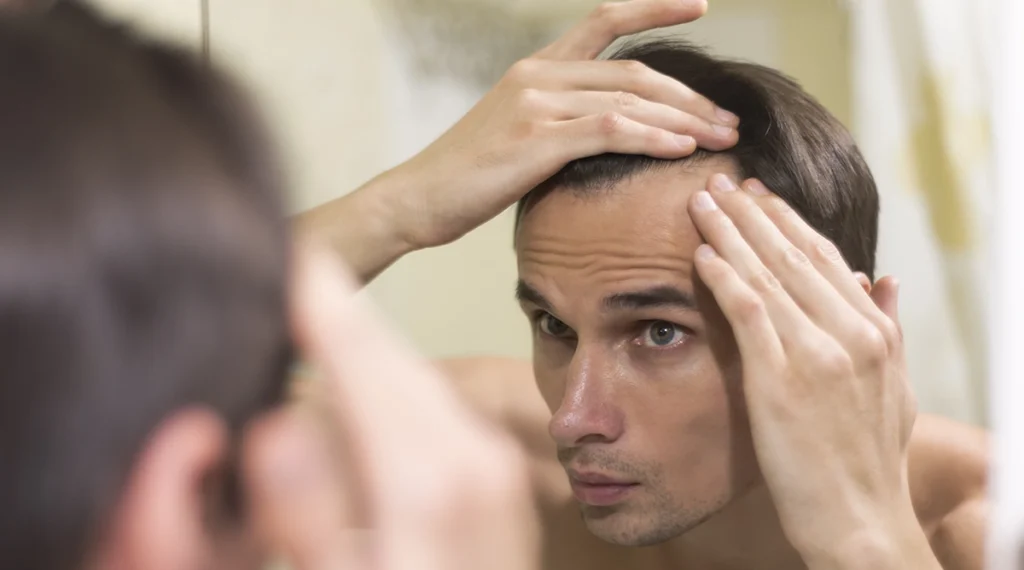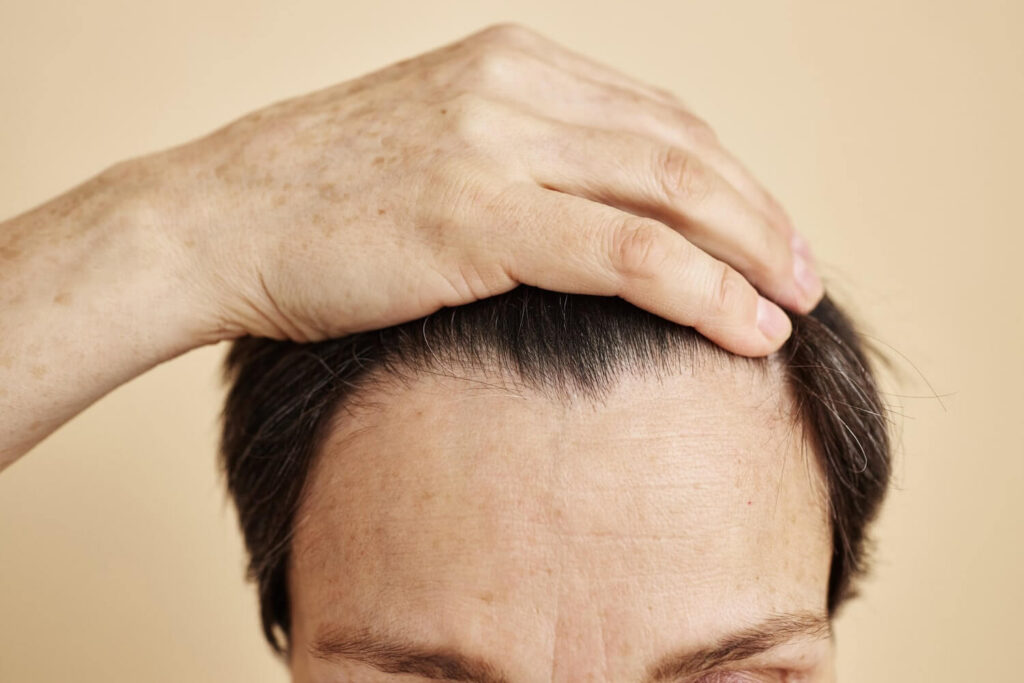
If you think hair transplantation only addresses hair loss, you are mistaken. Hair transplantation also provides solutions to problems more like bad hairline other than hair loss.
Hair transplantation is no longer limited to covering bald areas; today, it has become an aesthetic design art. With the daily development and increasing popularity of modern hair transplantation techniques, its areas of application have also expanded. At this point, natural hairline design has become one of the most common applications of this procedure. This is because the natural hairline stands out as one of the most critical stages that transform the overall expression of the face. This is because the hairline does not only define the boundary between the forehead and the hair; it also directly affects the balance, expression, gender, and age perception of a face.
İçindekiler
Why is the Hairline So Important?
The hairline is a visual “frame” that defines a person’s face at first glance. The correct positioning of this frame also affects the overall aesthetic harmony of the face. The hairline defines the upper third of the face, balances the height of the forehead, and, together with the eyebrows, affects the overall symmetry of the face. If this line is designed too far forward or too far back, even the highest quality hair transplant can create an unnatural appearance.
Therefore, for a successful hair transplant, an aesthetic perspective is as important as technical mastery. For a truly natural result, the hairline must be designed individually according to the person’s age, facial proportions, forehead width, and skin structure. This planning also requires the best possible analysis of the person’s facial needs.
Features Considered in Hairline Design
When planning a hairline, the “golden ratio” (phi ratio) principle is generally taken into account. This is because this ratio defines the harmony between the upper, middle, and lower sections of the face and is the basis for hairline design. We can consider the features that determine this ratio as follows:
- Face length and forehead height:
Approximately one-third of the total face length should correspond to the forehead height. - Temples and forehead edges:
The hairline should be parallel to the natural curves of the face; the temples should not be designed too rounded or too straight. - Age-appropriate design:
More pronounced and lower lines are preferred in younger individuals, while slightly receding and softer transition lines appear natural in older age.
Understanding the Difference Between Feminine and Masculine Hairlines
Hairline design differs according to gender. This is because feminine and masculine forehead proportions are structurally different from each other. These differences require a personalized design.
- Feminine Faces: The hairline is generally rounder, the forehead is shorter, and the temples are fuller. This shape gives the face a soft and feminine appearance.
- On Masculine Faces: The hairline is “M”-shaped, the forehead is slightly higher, and the temple areas are more open. When planning hair transplants, especially for trans women, the forehead line is transformed from a masculine shape into a feminine frame. This completely changes not only the facial features but also the person’s overall energy.
Common Techniques Used for Hairline Design
The two most commonly used methods for creating a natural hairline are FUE (Follicular Unit Extraction) and DHI (Direct Hair Implantation).
What is the FUE Technique?
- Hair follicles taken from the donor area are transplanted one by one to the recipient area.
- The surgeon places single grafts along the front line of the hairline and multiple grafts towards the back.
- This creates a soft appearance in the front and a dense appearance in the back.
What is the DHI Technique?
- The follicles are implanted directly using special implant pens.
- This method provides greater control over hair direction and angle of growth.
- A more natural, dense, and organic-looking hairline.
The Secret to a Natural Look: The Balance Between Hair Angle and Direction
Perhaps the most important step in creating a natural hairline is the angle and direction of the transplant. Hair is expected to extend forward at a 10–15 degree angle just above the forehead. If this angle is not taken into account, the hair will grow straight up and create an undesirable appearance.
Our surgeon, who is an expert in this field, will prevent this mistake by determining the direction of hair growth just as it occurs in nature. This ensures a natural result: the true success of aesthetics.
How Is a Natural Maintained After Surgery?
The post-transplant process is just as important as the surgery itself. This is because the results of the transplant depend on the healthy progress of this phase. As the hair follicles adapt to their new locations, careful maintenance is required:
- The area should not be touched for the first 10 days, and direct sunlight should be avoided.
- The first wash is usually done on the 3rd day, under professional supervision.
- The shock loss phase (usually between the 2nd and 4th weeks) is completely natural.
- New hair becomes noticeable from the first month onwards; the final result is seen at 12 months.
- Patience, regular care, and following the doctor’s advice make a big difference in achieving a natural line.
Hairline Design is an Art Beyond Aesthetics

A well-designed hairline provides not only physical but also emotional healing. Hair transplantation is not solely aimed at providing a visual solution, regardless of the problem. This procedure also restores people’s self-confidence. It allows individuals to feel that their face is “complete” again when they look in the mirror.
This creates a profound increase in self-confidence, especially for individuals who have experienced severe hair loss or are undergoing gender transition. For some, it is a rebirth; for others, it is like a long-missing piece finally falling into place. Every face tells a different story. Therefore, every hairline should be unique to the individual.
A natural, balanced, and aesthetic line makes the face appear younger, more vibrant, and more peaceful. With advancing techniques, hair transplantation is no longer just a medical procedure; it has become an elegant art form that reframes facial expression. If you also have aesthetic concerns about your hairline, you may want to give hair transplantation a chance.
Hairtrans.com was founded by world-famous plastic surgeon Dr. MFO, who is an expert in facial feminization or facial masculinization surgeries, and is managed under his leadership. Would you like to have a hair transplant under the coordination of a plastic surgeon with many years of experience?
Whether you are a trans woman or a natural born male or female, if you are looking for the best hair transplant, contact us now.


